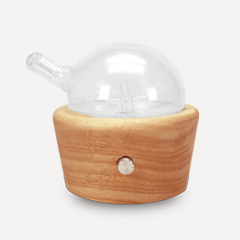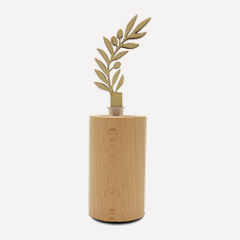
Aromatherapy Diffusion is the process of spreading essential oils and fill the space with the natural fragrance. They are many different methods to diffuse essential oils in an indoor space: by ultrasound, ventilation, nebulization, capillarity or heat. We master all these technologies of diffusion and offer top quality aromatherapy diffusers thanks to our expert teams and continuous investment in new technologies and designs.

Ultrasonic
Ultrasonic diffusion is the most wide spread technique on the market. Ultrasonic diffusers produce a steam of mist and lights up to enhance the relaxation and create a cozy atmosphere.
Ultrasonic diffusers use electronic frequencies to create vibrations in water which produce a fine cold mist of water and essential oils, released into the air. Since it uses water, some people like to use it in the winter to help humidify dry air.

Nebulizer
It is said that nebulizers can supply greater therapeutic benefits than the use of other aromatherapy diffusers because they break the oils down to smaller molecules. In opposition to ultrasonic diffusers, water is not needed. Only pure oils. This is the most concentrated way to diffuse essential oils. It is recommended to use in larger spaces, by cycles of 20 min.

Ventilation
Diffusion by ventilation occurs thanks to the combination of two procedures, air and capillarity. Ventilation diffusers are usually battery or USB operated. A few drops of essentials oils need to be poured on the absorbent material and placed into the diffuser. The diffusion is activated thanks to the built-in fan that blows the scented air out. They are convenient and easy to carry.

Heat
Heat diffusers use heat to gently heat the oil and disperse the aroma into a room. In order to keep the therapeutic property of essential oils, it is recommended to avoid heating them above 55 degrees.
